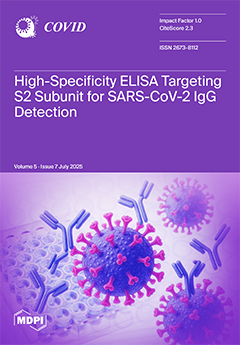The increased menstrual disturbances post-vaccination remain unclear. We examined factors, types, frequencies, and emotional challenges. We used a self-administered online questionnaire with the IBM-based SPSSv-24-Windows software for analysis. Of 1372 females, 61.1% (
n = 838) were aged 19–29 years, 94.2% (
n = 1292) were Saudis, 66.4% (
n = 911) were graduates, 70% (
n = 965) were single, and 15% (
n = 205) had chronic diseases. Moreover, 96.5% (
n = 1285/1332) had two vaccine doses, mostly Pfizer’s first- and second doses (82% and 78, respectively), while 3.5% (
n = 47) only had one. Vaccine groups significantly differed (Pfizer, Moderna, Oxford, and do not know) after the first (0.047) and second (0.049) doses, while Pfizer vaccines were predictive [OR = 2.09 (0.96–4.10),
p = 0.029] at two-doses [OR = 3.21 (1.23–5.21),
p = 0.030]. No acute COVID appeared. The majority (77%;
n = 1057) had no issues, except, in a subgroup of 23% (
n = 315) of participants, 43% (
n = 135) experienced worsening issues. However, 47.2% (
n = 629) complained only post vaccination. Most issues were (75%;
n = 471) cycle-timing disruptions; the rest were minor (decreased blood or bleeding, missed-periods, or pain). Other potential reasons were fear, stress, and mental health problems, which occurred in 51% (
n = 674) of the group, while 53% (
n = 701) were worried. Intriguingly, the menstrual issues in the remaining 47% (
n=631) who were not worried could be due to a direct molecular vaccine interaction, irrespective of any mental issue ([OR = 1.78 (0.76–3.21),
p = 0.033]. Age proportionalities were significant (
p = 0.05) in the 30–39 year-old group (51%). Postgraduate education [OR = 2.11 (0.98–4.72),
p = 0.015) and employment [OR = 2.18 (0.95–4.86),
p = 0.049] were also predictors. These findings have significant implications in women’s health and vaccine improvement. Future studies on diverse factors are warranted.
Full article





